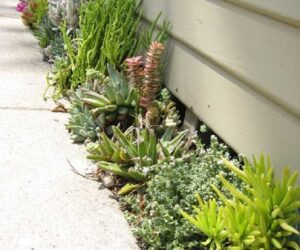African violets are small plants that are very easy to grow and take care of. All you need to do is learn about basic needs, and you can have a gorgeous addition to your home. The plant blooms with beautiful pink, violet, blue, white, or purple flowers and can brighten any room.
Read on and learn useful tips on how to grow African violets by yourself.
1. Soil

Via www.youtube.com
African violets grow best in soil that is slightly acidic with a pH between 6.4 and 6.9 with high organic matter. The best mixture for these flowers would consist of equal parts of perlite, vermiculite, and peat moss. The soil should also be well-drained.
2. Light
African violet likes moderate to bright, indirect light. Turn pot regularly so that the flower will be able to get light from all sides. They need at least 8 hours of light per day. It is also fine if they get artificial light.
3. Planting
The pot should be around one-third to half the diameter of the plant. Shallow pots are better because they provide good drainage and root aeration. If you plan to plant more African violets together, give them enough space so that they won’t touch each other.
4. Watering
Water African violets with lukewarm water or water that was allowed to stand for at least 48 hours. The soil should be lightly moist, and it should dry out around roots before the next watering. Water only at the base in order to avoid getting the leaves wet.
5. Care

Via www.youtube.com
African violet prefers a warm environment with temperatures at least 65 degrees F or even warmer. If the temperature drops below 50 F, the plant will probably die. Keep humidity on the same level. The ideal for African violets would be between 40 and 60 percent.
6. Fertilizer

For optimal growth, you can occasionally fertilize your African violet soil, especially during the summer months. Be careful, though, not to overdo it, which is the problem more often than the other way around. Use fertilizer with a higher phosphorus number.
7. Advices

Via jeffcogardener.blogspot.si/
Observe the leaves of your African violet, and if you notice they are thin and dark green, the plant is probably not getting enough light. Keep them away from fans, floor vents, or even entrance doors. They don’t like drafts or anything that would cause sudden temperature changes.
8. Re-potting

via www.espritdeisle.com
Re-pot your African violet every year. The optimal time for re-potting is after some leaves have wilted a bit. The plant grows quite fast, that is why it’s really important to re-pot it regularly. You should always use one size larger pot and new soil.
9. Pruning
It is recommended to remove all African violet leaves that have started to decay. Pinch off spent blossoms and blossom stems to encourage the development of new blooms. Do the same with any bottom leaves that are turning yellow.
10. Problems
When you are buying new African violet, check carefully because the plant is prone to some common insects and diseases. There are numerous forms of rot and blight. There is also a threat of Powdery Mildew or Cyclamen.









This is a great piece for getting the basics of taking care of African Violets!
I have three African Violet and they will not bloom. I feed them and they look good, but want bloom. What my problem.